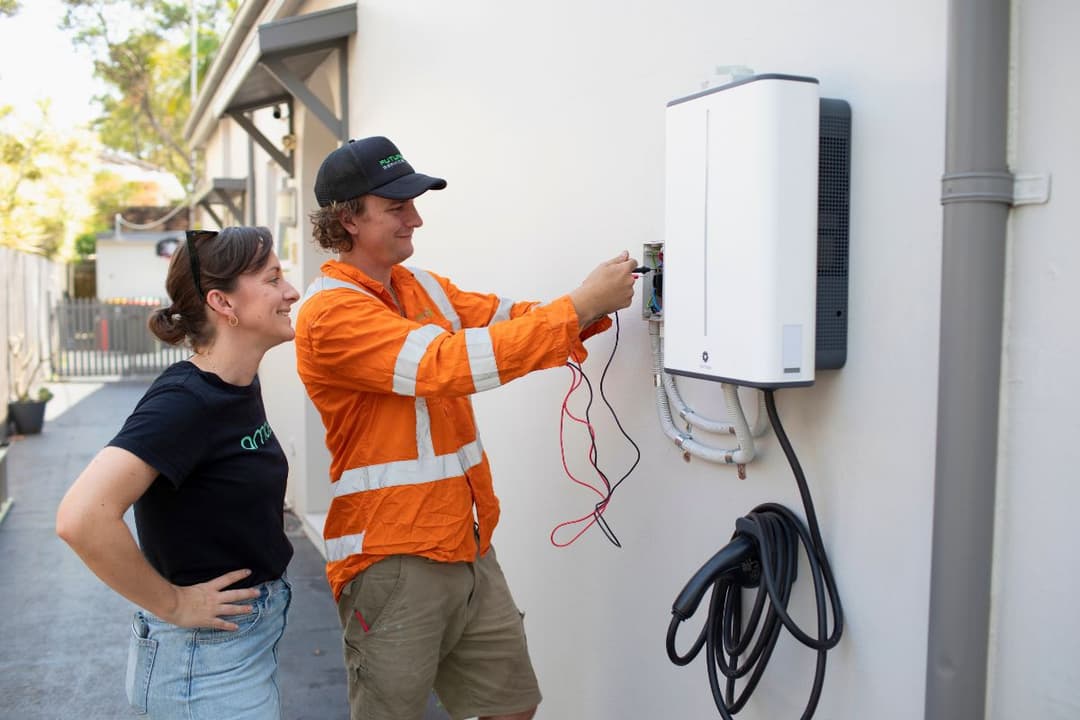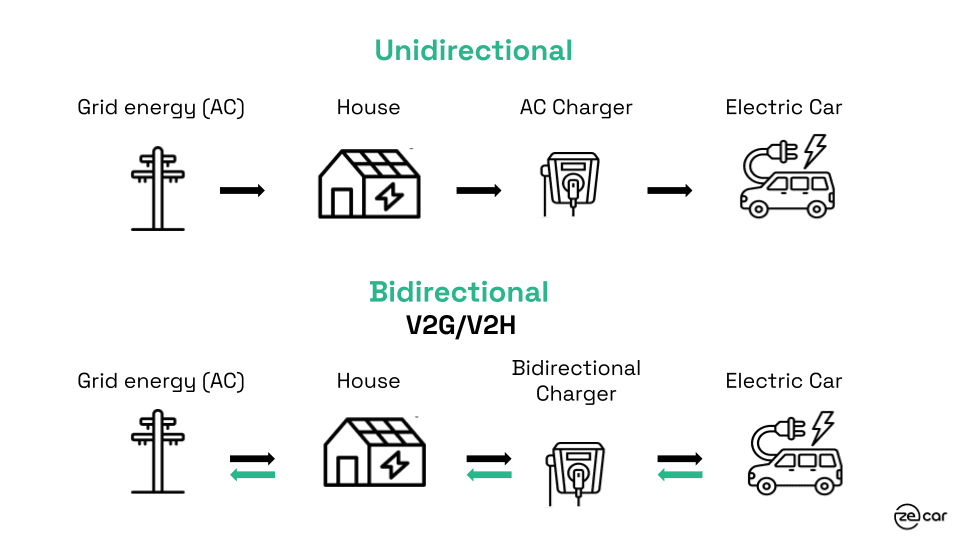
Australia has taken another step towards a renewable energy future with the installation of the first vehicle-to-grid (V2G) capable home charger under the ARENA-funded Amber Electric project. The installation featured a BYD Atto 3 connected to a StarCharge Halo V2G charger.
The initiative will see 50 V2G chargers deployed across residential properties, allowing electric vehicles (EVs) to act as “batteries on wheels”. This means EV owners can store energy in their cars and feed it back into the grid when needed, helping balance electricity demand while reducing household energy costs.
Last week BYD made the historic announcement it would warrant 50 EVs participating in Amber’s V2G trial with ARENA.
▶️MORE: Bidirectional (V2H and V2G) EV Chargers Guide (2025)

According to ARENA CEO Darren Miller, the milestone marks an exciting new chapter in Australia’s clean energy evolution. He described V2G as a “potential game changer,” highlighting how it can reshape the way energy is stored and shared across the country.
ARENA CEO Darren Miller said the installation signals a major breakthrough for Australia’s energy system.
“This is a landmark moment for Australia’s energy system. Vehicle-to-grid technology has the potential to transform how we think about and deploy energy storage and grid support. By enabling Australians to participate in the energy market through their EVs, we’re unlocking new value streams and building a more resilient, renewable-powered future.”
▶️MORE: Which Electric Cars Have Bidirectional Charging

How Does Vehicle-to-Grid (V2G) Technology Work?
V2G technology lets EVs do more than just drive. When parked and plugged into a compatible charger, an EV can send unused power from its battery back into the grid or to the home itself.
This bi-directional flow turns the car into a mobile energy storage unit that can:
- Store solar power during the day and release it at night
- Support the electricity grid during peak demand
- Help reduce reliance on fossil fuels
With millions of electric vehicles expected on Australian roads within a few years, V2G could create a nationwide network of flexible, distributed energy storage.
▶️MORE: Watt is Bidirectional Charging, V2G, V2H, V2L?
Why Is This a Major Step for Australia’s Energy Future?
Amber Electric Co-CEO Chris Thompson said the installation offers a glimpse of what everyday Australians can expect from a V2G-powered future. “It’s about giving households control and real financial benefit from the energy transition,” he said.
By turning EVs into active participants in the grid, the technology can help improve grid stability, boost renewable integration, and cut energy bills.
Since 2019, ARENA has led several first-of-its-kind V2G studies, paving the way for this rollout. The 2025 National Roadmap for Bidirectional EV Charging outlines the key steps needed to make V2G a commercial reality by 2030, positioning Australia at the forefront of global smart energy innovation.
About the author
Stay up to date with the latest EV news
- Get the latest news and update
- New EV model releases
- Get money savings-deal

